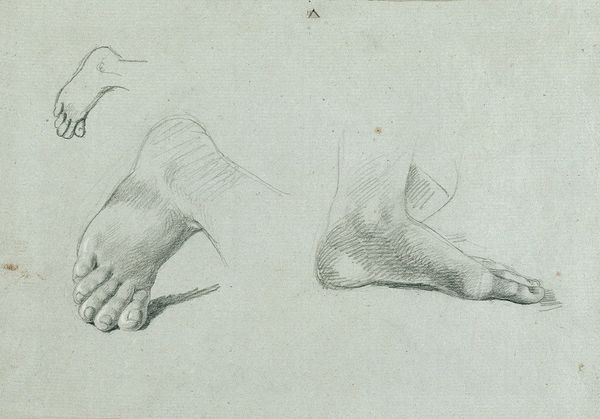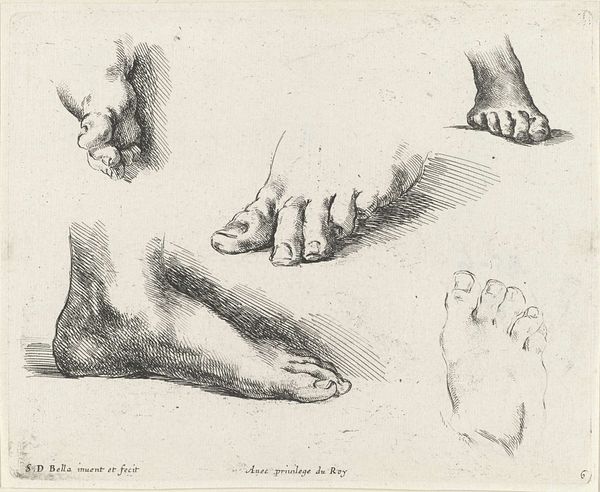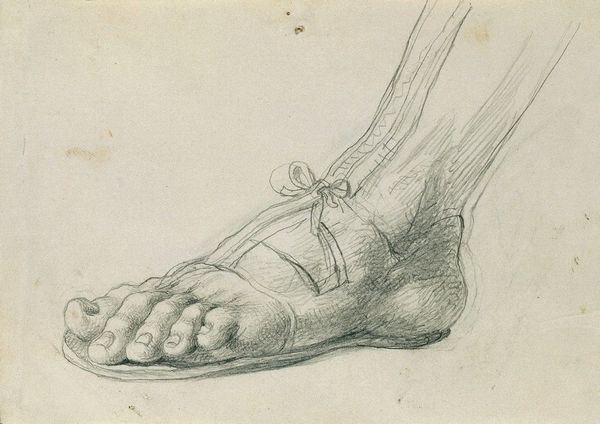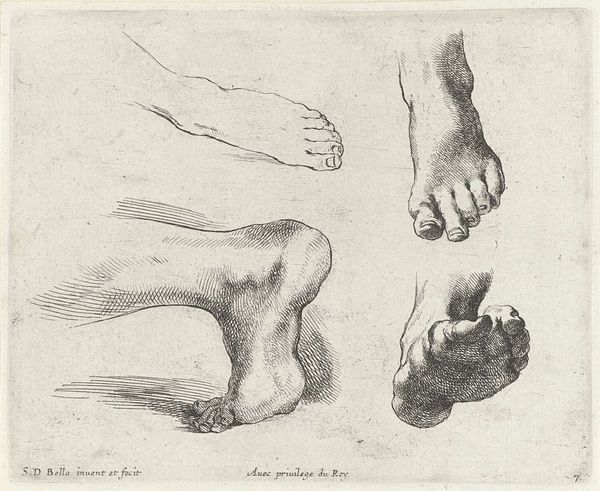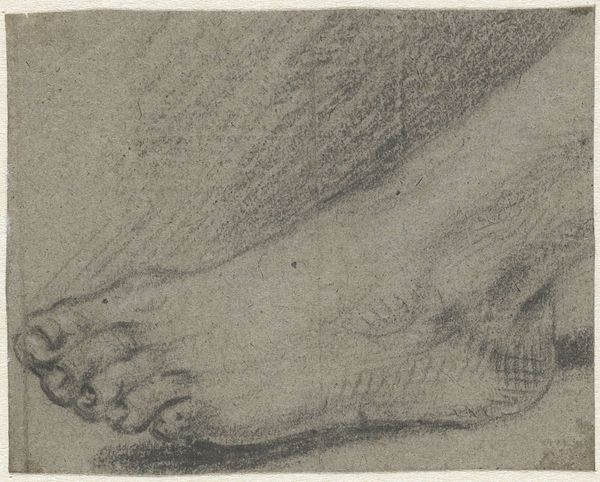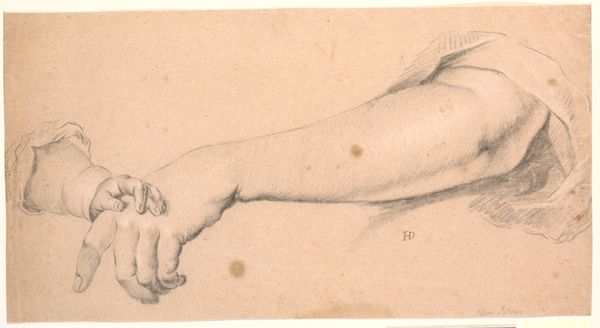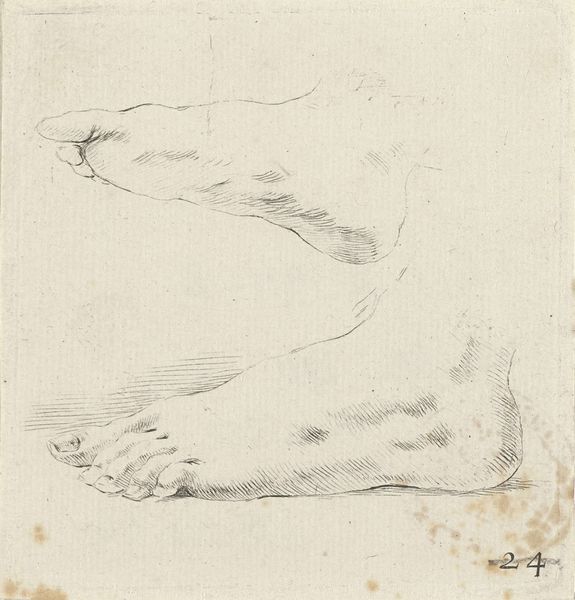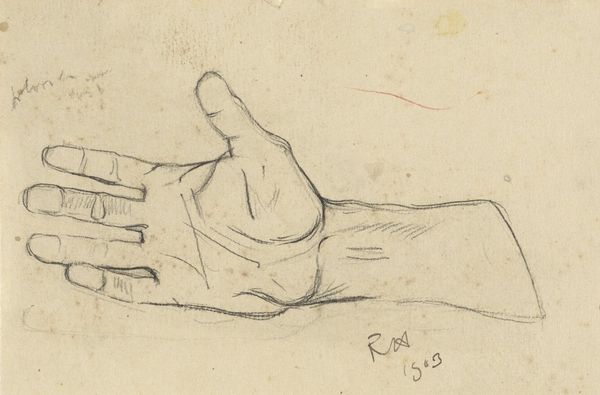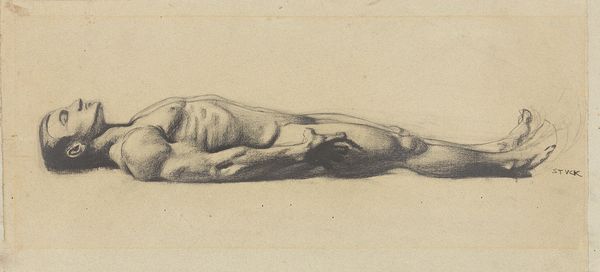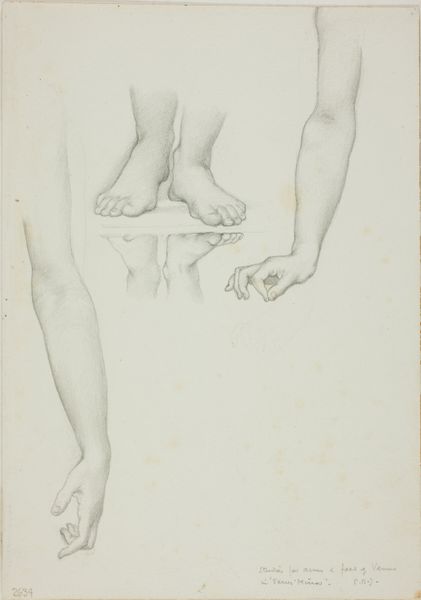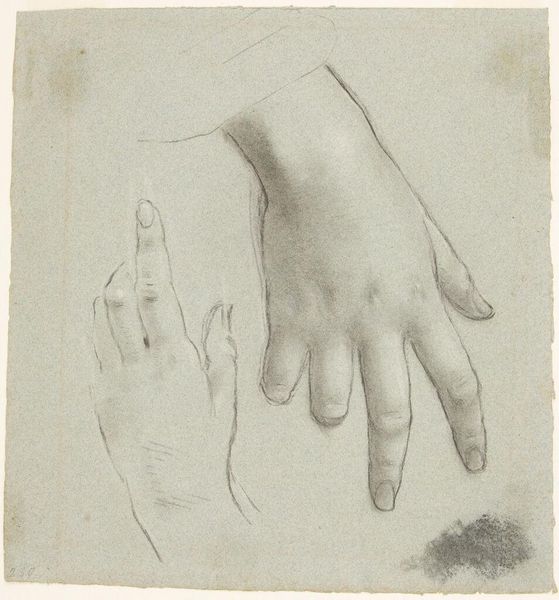
drawing, pencil
#
portrait
#
pencil drawn
#
drawing
#
pencil sketch
#
charcoal drawing
#
figuration
#
pencil drawing
#
romanticism
#
pencil
#
portrait drawing
#
academic-art
Copyright: Public Domain: Artvee
Curator: This is Johann Peter Krafft's "Foot Study for ‘Arindal and Daura’," dating roughly between 1820 and 1855. It’s rendered in pencil. Editor: Immediately, I see this delicate layering, building form from such fragile means. A real study in subtle tones. Curator: Precisely. Krafft employs an academic style here, prioritizing the accurate representation of form, showcasing his understanding of anatomy and perspective within this confined frame. Consider how the line varies in weight to create the illusion of three-dimensionality. It’s all about the formal elements here. Editor: And the paper itself, likely laid by hand. What were the conditions of this craft, the labor of processing raw materials into the surface that carries these skilled marks? I wonder about the pencils used and where these specific raw materials were sourced from during that era? This was likely made for the sake of his own learning and preparation, yes? How does a simple pencil, humble graphite bound with wood, give birth to such a monumental final effect within painting and in his practice. Curator: Good point, but let’s not forget to note that it appears as a preparatory sketch for a larger painting. Note the anatomical observation which speaks to broader academic painting techniques and also reflects a focus on human ideals from Krafft. What we can also notice as a central element is this underlying sense of depth of form, shape, and shadowing techniques. Editor: Speaking of touch and toil, notice the textures that can be coaxed from pencil—from nearly invisible dusting to denser applications where you can practically feel the tooth of the paper. It calls attention to not only the subject but how exactly it can materialize from a piece of pencil in Krafft's studio. And for who were these images produced and how were they consumed? This piece reflects upon the production circumstances surrounding even preliminary works like these. Curator: Very true, I acknowledge and enjoy what Krafft's process communicates. It reminds us about formal concerns regarding shape, shading, texture—and, of course—its inherent preparatory value, reflecting this kind of process which emphasizes academic artistic practice that came to fruition here. Editor: Well, reflecting about art through process certainly sheds another perspective. We just observed its production within cultural frameworks shaping its artistic relevance.
Comments
No comments
Be the first to comment and join the conversation on the ultimate creative platform.
